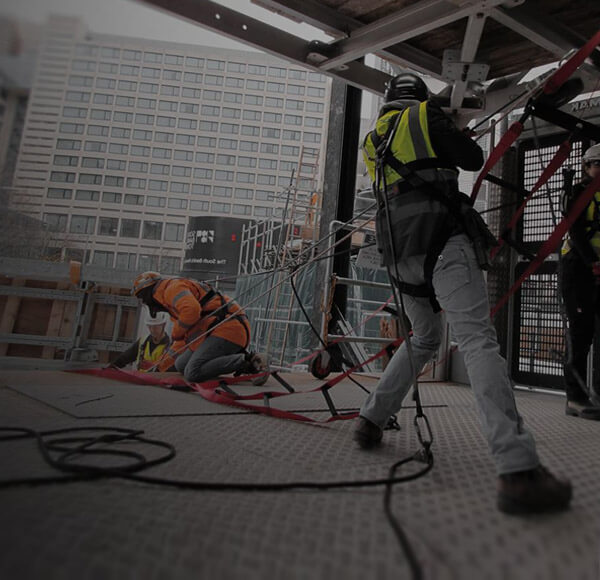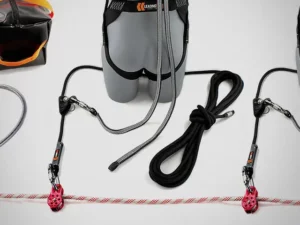
The most fundamental difference between the two methods of work is the fall potential. A fall arrest system allows the operative to fall and then ‘arrests’ the fall. Whereas fall restraint system, (when used correctly), prevents the fall occurring. Both fall restraint and fall arrest systems are personal fall protection systems and must be designed to the British standard BS 8437.
| Fall Restraint | Fall Arrest | |
| How does it prevent a fatal fall? | It prevents you from falling and reaching a fall hazard with the use of a body holding device connected to a safe anchor point. | It protects you after a fall by stopping the fall in progress through a body holding device connected to a safe anchor point. |
| Required safety equipment | Custom fitted height safety equipment. | Custom fitted height safety equipment. |
| Professional training needed | Yes, annual leading edge training is required. | Yes, annual leading edge training is required. |
| Inspection guidelines | All equipment must be inspected, properly worn, and cared for before and after every use. | All equipment must be inspected, properly worn, and cared for before and after every use. |
| Potential for injury | Low | High |
| Example personal protective equipment | A full body fall restraint harness and lanyard secured at a set length from a suitable anchor point. | A full body harness and fall arrest lanyard securely attached to a suitable anchor point. |
Working in restraint significantly reduces the risk of an operative falling and therefore all the issues related to fall hazards. Fall restraint also enables an operative safe access and mobility necessary to reach the leading edge to complete their work tasks whilst being prevented from potentially falling from height.
There are three main types of restraint equipment found when working up at height on construction site:
There are two main types of fall arrest equipment found when working up at height.
Self-retractable fall arrester: self-retracting lifeline, fall arrest block inertia reel. This is an extendable lanyard which has a self-braking and locking function and an automatic return facility as well as minimising the impact force generated in a fall. This allows the operative freedom and movement in a task.

Fall restraint greatly reduces the load (pull) applied to the operatives body compared to using a self-retractable fall arrester.
It is important for the supervisor to assume a good point of observation.
Keep in mind that The Work at Height regulations stipulate a supervisor may not put himself in danger when choosing his point of observation. For example, observing gutter work by posting oneself on a roof might be acceptable if the supervisor is properly tethered and has full vision of the work being done. But if operatives dip below the eaves, it would be imprudent for a supervisor to move to the edge of the roof in order to see the work. That would be putting himself in danger just to maintain his point of observation.
Although all the detail of the work might not necessarily be observable from the ground, such a scenario would dictate the supervisor moved to ground level in order to observe work done on the eaves. Perhaps if the building had a second-floor window with a decent view a supervisor could move to that room. The point is, supervisors need to watch out for their own safety as well as that of their workers. They are just as prone to falling from height if they are careless in determining a point of observation.
It is the duty of every employer to include guidelines of a working at height rescue plan. Rescue operations are undertaken when an operative is injured, suspended in a harness after a fall or stuck on an elevated platform. It is the responsibility of the company to make sure the rescue plan can be executed properly in an easy and timely manner.
Rescue planning is an area which many companies assume is not needed, due to implementing proper planning and safety procedures to significantly reduce the potential of accidents. It is however, not possible to prevent every single accident. There will be a time when equipment fails and operatives make mistakes. It is during these times when a rescue plan needs to work to reduce unfavourable outcomes. Remember, replying on the emergency services is not a rescue plan!
Some fundamental guidelines and requirements for work at heights have been provided here. It’s not possible to cover everything. If your company does conduct working at height activities it is your responsibility to be aware of the safety regulations and procedures are correctly implemented. Everyone has a duty to themselves and surrounding delegates to be competent and suitably trained for the task. Discover more about our height safety managers training course.
Copyright 2025 Leading Edge Safety. Devloped by Czargroup Technologies